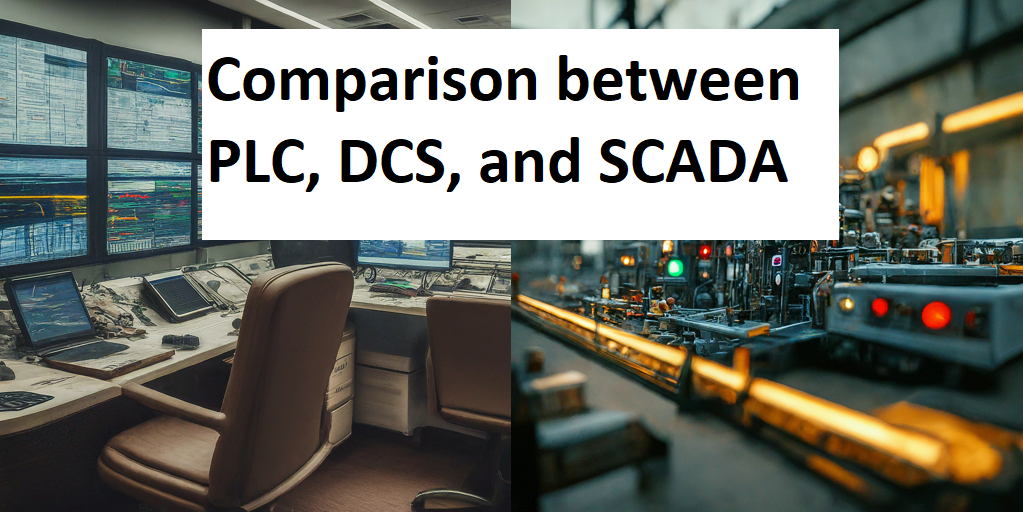PLC, DCS, and SCADA: A Comparative Analysis – Discover the key differences and applications of Programmable Logic Controllers (PLCs), Distributed Control Systems (DCSs), and Supervisory Control and Data Acquisition (SCADA) systems. Learn how these industrial automation technologies work together to control and monitor complex processes.

Understanding the Basics
Before diving into the comparison, let’s briefly define these terms:
- PLC (Programmable Logic Controller): A digital computer specifically designed for industrial control applications. It uses a programmable memory to store instructions that execute a sequence of operations.
- DCS (Distributed Control System): A system that uses multiple interconnected computers to control a process. It’s designed for large-scale, complex processes.
- SCADA (Supervisory Control and Data Acquisition): A system used to monitor and control industrial processes from a central location. It often integrates with PLCs and DCSs to provide a higher-level view.
Key Differences
| Feature | PLC | DCS | SCADA |
|---|---|---|---|
| Scope of Control | Smaller-scale, discrete operations | Larger-scale, continuous processes | High-level supervisory control |
| Complexity | Relatively simple | Highly complex | Moderate complexity |
| Hardware Architecture | Single or few processors | Multiple interconnected processors | Centralized or distributed |
| Software Architecture | Ladder logic, function block, and other programming languages | Object-oriented programming and real-time operating systems | HMI, data historians, and communication protocols |
| Typical Applications | Machine control, assembly lines | Power plants, refineries, chemical plants | Water treatment, oil and gas pipelines |
Comparison Matrix
| Feature | PLC | DCS | SCADA |
|---|---|---|---|
| Cost | Lower | Higher | Moderate |
| Scalability | Limited | High | High |
| Flexibility | Moderate | High | High |
| Reliability | High | High | High |
| Integration | Good | Excellent | Excellent |
When to Use Which
- PLC: For smaller-scale, discrete processes with simple control requirements.
- DCS: For large-scale, continuous processes that require complex control and integration.
- SCADA: For supervisory control, data acquisition, and integration of multiple systems.
Overlapping Functions
While these systems have distinct roles, there is often overlap in their functions. For example, a DCS may include PLCs for lower-level control, and a SCADA system may monitor and control both PLCs and DCSs.
In Conclusion
The choice between PLC, DCS, and SCADA depends on the specific needs of the application. By understanding the key differences and considering factors such as scale, complexity, and integration requirements, you can select the most appropriate system for your industrial control needs.
Home | Join us on Facebook, Twitter, YouTube, Instagram, Quora, Reddit, LinkedIn, Pintereset, Blogger.